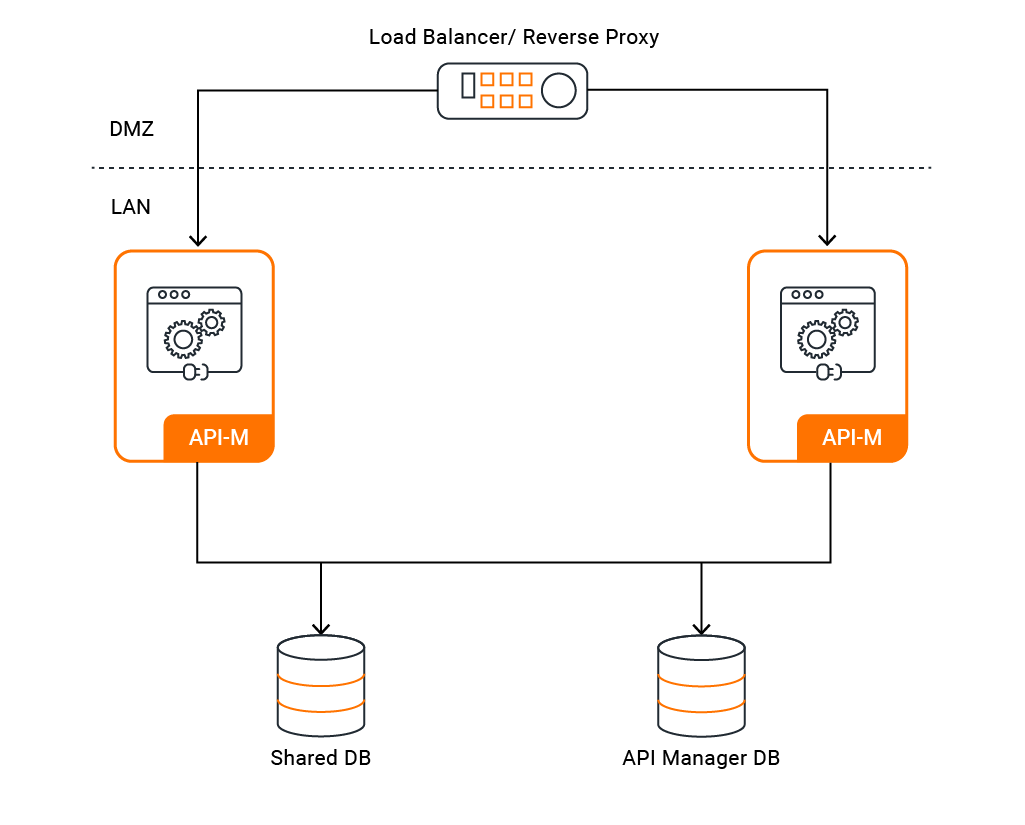All-in-One Deployment Overview¶
An all-in-one deployment contains all the API-M components in one runtime instance. This is easy to set up and requires less resources when compared with a distributed deployment. Although a distributed deployment provides high performance and a high level of scalability, it may be too complex if you want to a small to medium scale API management solution. The all-in-one deployment is ideal if you want to start small and iteratively build up a robust API management platform.
Single Node Deployment¶
In this setup, API traffic is served by one all-in-one instance of WSO2 API Manager.
| Pros | Cons |
|---|---|
| Production support is required only for a single API Manager node (you receive 24*7 WSO2 production support). | |
| Deployment is up and running within hours. | |
| Can handle up to 43 million API calls a day (up to 500 API calls a second) | |
| Minimum hardware/cloud infrastructure requirements (only one node). | |
| Suitable for anyone new to API Management. | Deployment does not provide High Availability. |
| Not network friendly. Deploying on a demilitarized zone (DMZ) would require a Reverse Proxy. |
Info
For more information on manually configuring a single node API-M production server, see Configuring a Single Node.
Active - Active Deployment¶
In this setup, API traffic is served by two single node (all-in-one) instances of WSO2 API Manager.
| Pros | Cons |
|---|---|
| The system is highly available. | |
| Production support is required for 2 API Manager nodes (you receive 24*7 WSO2 production support). | |
| Can handle up to 86 million API calls a day ( up to 1000 API calls a second) | |
| Deployment is up and running within hours. | Not network friendly. Deploying on a DMZ would require a Reverse Proxy. |
Info
For more information on manually configuring active-active API-M production servers, see Configuring an Active-Active Deployment.

